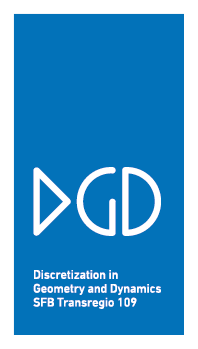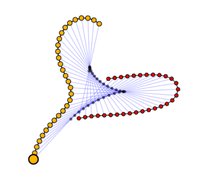Antiparallelograms
Tim Hoffmann, Jürgen Richter-GebertMedia
Description
The Discrete Darboux transform of a polygon (as detailed here [1]) is given by a parallelogram folded along its diagonal: Given an edge from $F$ to $F_1$ of the polygon and an initial point $F_2$ there is a unique point $F_{12}$ that has distance $\Vert F_1-F \Vert$ from $F_2$ and distance $\Vert F_2 - F\Vert$ from $F_1$ and that does not make $F,F_1,F_{12},F_2$ a parallelogram. One can think of this as an evolution equation mapping initial Cauchy data $F,f_1,F_2$ to a unique point $F_{12}$. This applet shows that this equation is 3d-consistent and thus integrable. If one picks a fourth initial point $F_3$ three folded parallelograms can be formed giving unique points $F_{12},F_{13}$, and $F_{23}$. Thinking of them as the first three sides of a cube three more can then be formed giving rise to three more points $F_{123},F_{231}, F_{312}$. It is a theorem that these three points always coincide and the construction always gives a combinatorial 3d-cube with all sides being folded parallelograms.






